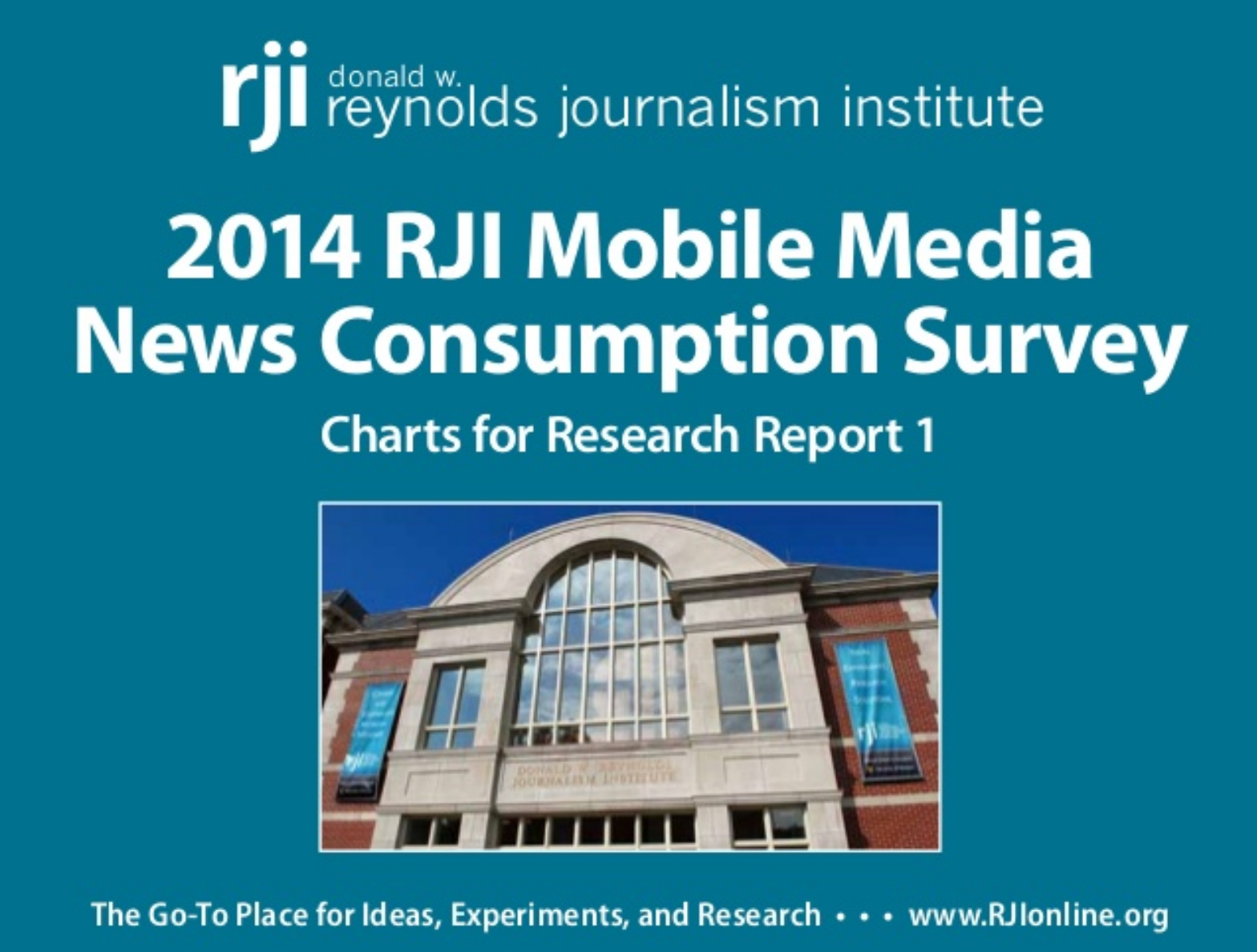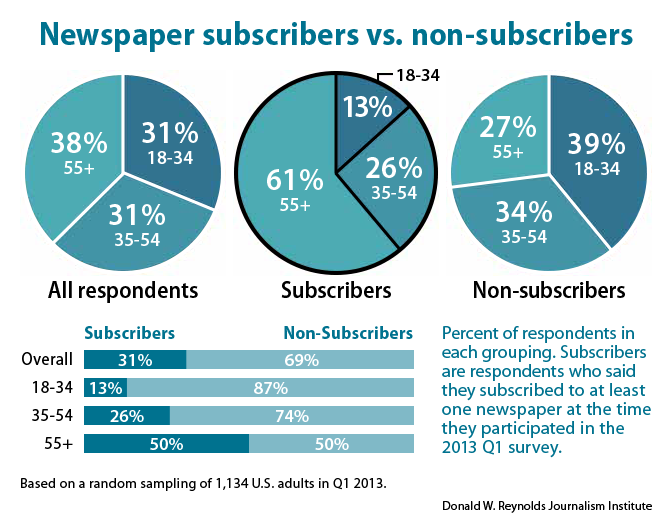
Research
More newspaper subscribers embracing mobile media while retaining their attachment to print
2014 RJI Mobile Media Research Report 8 Newspaper subscribers are increasingly using smartphones and tablets while retaining a strong attachment to print, according to the latest mobile media survey from the Donald W. Reynolds Journalism Institute (RJI). The percentage of respondents who said they subscribed to at least one printed newspaper remained at around 30 … Continued
Tablets tend to boost news consumption on smartphones and likelihood of paying for mobile news content
2014 RJI Mobile Media Research Report 7 Smartphone owners who also have tablets are much more likely to use their smartphones for consuming news organization content than those who do not have tablets, according to the latest mobile media survey from the Donald W. Reynolds Journalism Institute (RJI). Smartphone owners with tablets also are more … Continued
Seniors more likely to read news on tablets, size appeals to all ages for leisure use
Both tablets and smartphones are used by a majority of owners for keeping up with the news, but tablets are used for news by a somewhat higher percentage of owners aged 55 or older than by those aged 18-34 (see charts 6.1 and 6.5), according to the latest mobile media survey from the Donald W. … Continued
Nearly all large tablet owners also use smartphones
The pairing of large tablets with smartphones has important implications for news organizations. Nearly 9 in 10 large tablet owners also use smartphones according to the latest mobile media survey from the Donald W. Reynolds Journalism Institute (see chart 5.8). Only 4 in 10 smartphone owners said they also used large tablets (see report 3, … Continued
Women use smartphones more than men to read news found within social media
2014 RJI Mobile Media Research Report 4 Women are much more likely than men to read news stories found within social media on their smartphones according to the latest mobile media survey from the Donald W. Reynolds Journalism Institute (RJI). About three-quarters of the women who owned smartphones said they had interacted with social media … Continued
Majority of smartphone owners are now routinely using news apps
About 60 percent of smartphone owners are now routinely using news apps on their smartphones according to the latest mobile media survey from the Donald W. Reynolds Journalism Institute (RJI). About 40 percent of the owners who use smartphone news apps are using apps branded by newspapers. In the week prior to participating in the … Continued
Grant funding helps journalist tell stories about adverse childhood experiences and grow niche news
ACEs Connection Network is offshoot of Jane Stevens’ 2008-2009 RJI Fellowship One way to prevent childhood trauma and the adult social and health problems that often follow is to raise awareness. This mindset led health journalist Jane Stevens to create her own niche health news network. Story ideas began piling up faster than she could … Continued
Seniors hold key to future growth for mobile media
2014 RJI Mobile Media Research Report 2 While the percentage of U.S. adults who use smartphones and/or tablets continues to grow, the use of mobile media by people aged 55 or older, who now represent more than 60 percent of non-users, will be a critical factor in future growth according to the latest Donald W. … Continued
Tablets are now commonplace in households with children
2014 RJI Mobile Media Research Report 1 More than half of U.S. households now have tablets and three-quarters have smartphones according to the latest Donald W. Reynolds Journalism Institute (RJI) mobile media poll. Households with children were much more likely to have mobile media devices than those without children. In households with children, 70 percent … Continued
Newspapers’ mobile products have two distinctly different audiences
2013 RJI Mobile Media Research Report 6 This report focuses on the use of media tablets and smartphones by newspaper subscribers and non-subscribers. While newspaper subscribers differed from non-subscribers in most demographic categories, age was the most significant. Our findings revealed how the high percentage of subscribers aged 55 or older and low percentage aged … Continued


